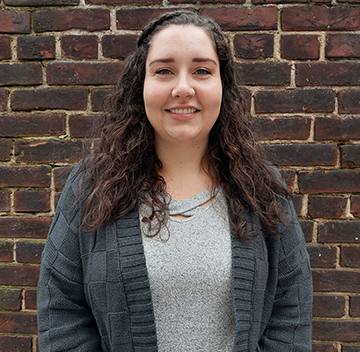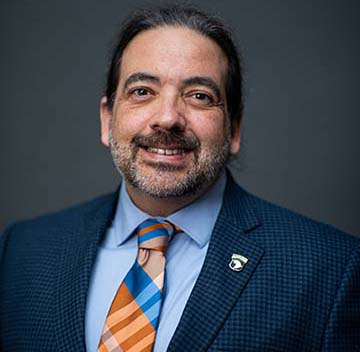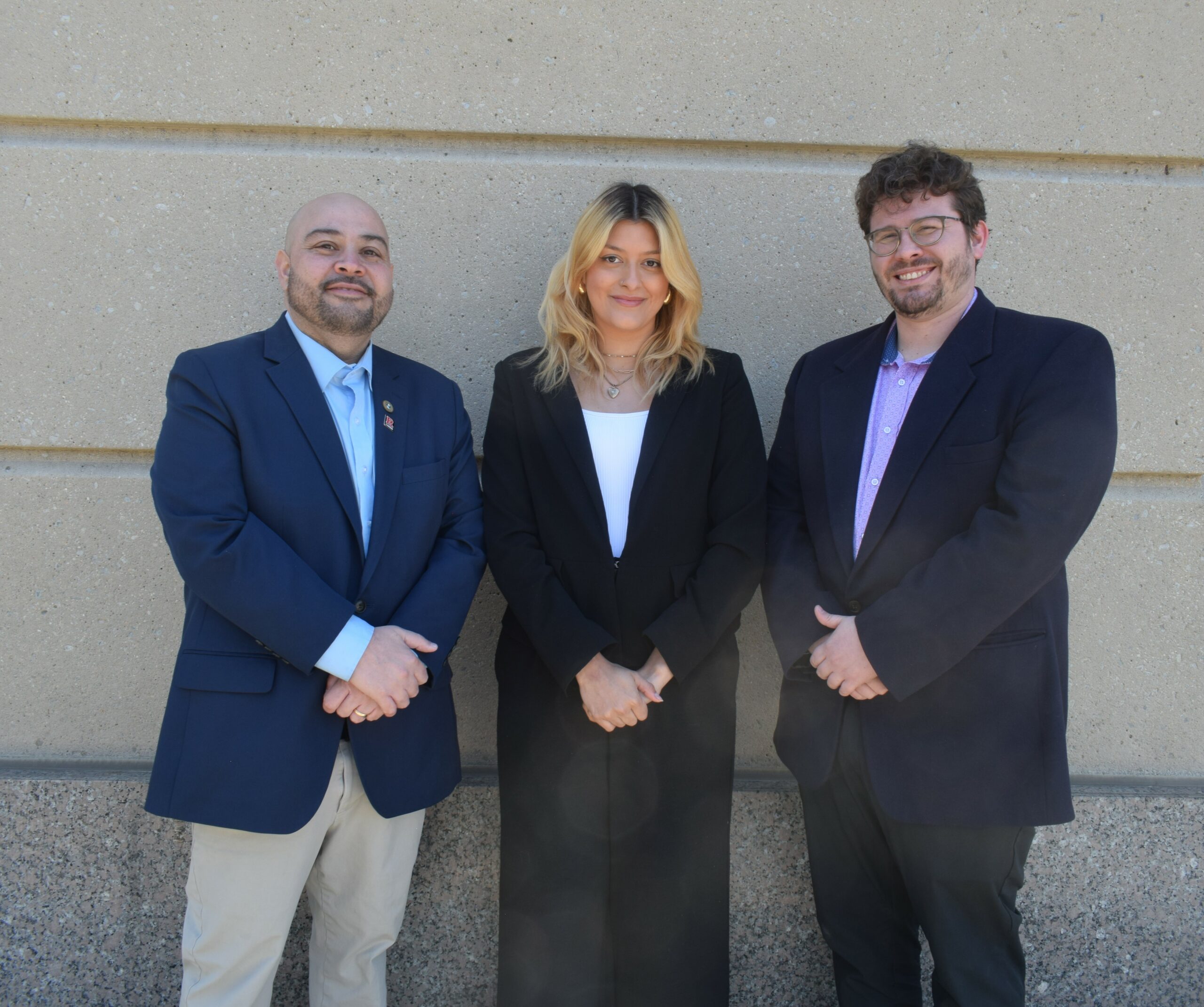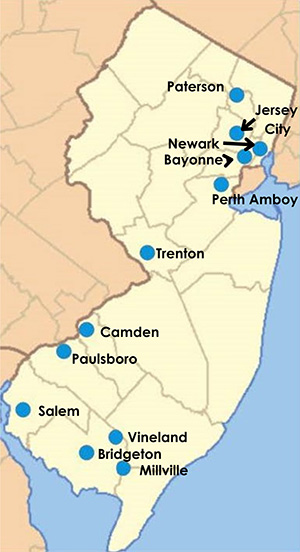Cities and Liaisons
Cities and Liaisons
The Community Collaborative Initiative operates in twelve New Jersey municipalities which are Camden, Trenton, Perth Amboy, Bayonne, Bridgeton, Jersey City, Millville, Newark, Paterson, Paulsboro, Salem, and Vineland.
Each liaison will be assigned three communities and they will be a single point of contact for that community. They will coordinate community efforts that would benefit from DEP involvement. Their connections within the community and the DEP are used to leverage expertise and resources to facilitate innovative solutions that align with community interests and DEP goals.
The Role of a CCI Liaison
Community Collaborative Initiative (CCI) Liaisons serve as direct connections between the New Jersey Department of Environmental Protection (NJDEP), local governments, and community groups, working to address environmental challenges and drive meaningful change in communities. They play a vital role in finding solutions to environmental problems, securing funding opportunities, providing technical assistance, and developing actionable plans tailored to each community’s needs.
Beyond project development, CCI Liaisons monitor progress to ensure long-lasting, positive impacts. By leveraging their relationships within both the community and NJDEP program areas, they coordinate efforts that benefit from state involvement, facilitating innovative solutions that align local priorities with goals. Through this approach, CCI Liaisons help advance sustainable development, equitable economic growth, and improved public health, supporting NJDEP’s mission to build a more vibrant and resilient New Jersey

Korie Vee, Community Liaison
Korie has prior experience working at DEP as a Compliance Assistance Manager. Before joining DEP Korie worked as an Environmental Educator for Non-Profits. In addition, Korie has over a decade’s worth of experience working at the County level performing Open Space Stewardship. Korie has valuable experience in engaging Communities with environmental policy, as well as leading Conservation efforts throughout New Jersey.

Katherine Dollman, Community Liaison
Katherine was an AmeriCorps Watershed Ambassador for the Mullica River watershed (WMA 14) prior to joining CCI. During that time, she developed and implemented community-based projects and collaborated with local organizations to enhance community involvement in environmental protection efforts. Katherine has a B.S. in Conservation and Wildlife Management from Delaware Valley University. In her free time, she enjoys traveling, gaming, and spending time with family, friends, and pets.

Tiffany Falcone, Community Liaison
Tiffany began her DEP career in 2017, shortly after completing the AmeriCorps Watershed Ambassadors Program. She worked in Site Remediation Program where she gained environmental policy experience where she collaborated with different levels and branches of government to bring contaminated sites back into compliance, prior to joining CCI. She holds two B.S. degrees in Biology and Chemistry from Sacred Heart University.
Staff

Vincent Caliguire, CCI Team Manager
Vince has multiple areas of expertise in government, environmental, and business disciplines and has been assisting Salem City and Paulsboro as a community liaison with CCI since 2019. Vince hopes to continue the good work of CCI with this new team and develop other dynamics where CCI can be a partner in solving issues in New Jersey’s most challenging areas.

Arthur Zanfini
Manager, Community & Local Government Assistance

Priya Ratanpara
Planning & Metrics
Support Staff
The CCI support staff are integral to the program’s success by providing technical expertise, facilitating stakeholder collaboration, and ensuring that projects align with community needs and environmental goals. Their dedicated guidance and problem-solving skills help municipalities navigate complex challenges, securing sustainable and impactful outcomes.


CCI Cities Selection Process
CCI cities were selected through a Legislative process that identified communities that were underserved or vulnerable based on environmental, social, and economic factors. This includes towns with a history of environmental contamination, communities with high poverty rates, and communities where state support could lend aid in economic growth, infrastructure improvements, or environmental restoration.
 OFFICIAL SITE OF THE STATE OF NEW JERSEY
OFFICIAL SITE OF THE STATE OF NEW JERSEY